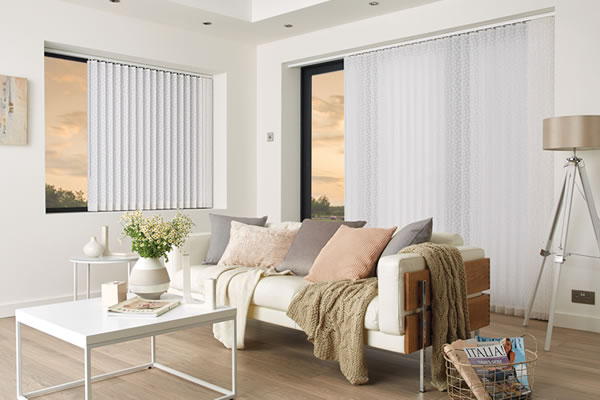If you are looking for window treatment for your home or office, you are likely to come across several options like curtains, drapes, sheers and blinds. In the recent past, blinds have started gaining a lot of popularity than other window dressing options.
For the uninitiated, window blinds are type of window covering that has been trending in the interior décor market. If you are new to blinds, this guide can help you learn more about this window treatment, thus helping you make a well-informed choice.
Types of Windows Blinds
There are different types of windows blinds available in the market. Having an idea of what these are can help you make the right choice.
-
Vertical Blinds
The function and design of vertical blinds are similar to Venetian blinds. The main difference is that it is vertically designed with a similar concept. The vanes hang from the top and are connected with a chain at the bottom. It slides to the side when opened or closed using the cords.
- Advantages
It is a very affordable option for doors and full-sized windows. The simple design of these blinds makes them suitable for different types of doors such as French doors or sliding doors and bay windows. You can choose from a vast range of colours, designs, and materials.
- Disadvantages
Cleaning the vanes may be a little tricky. They need to be cleaned or wiped separately because vertical blinds are usually used for large area coverage. In terms of maintenance, roller blinds are easier to clean.
-
Pleated Blinds
Pleated blinds are a kind of fabric blind. The fabric of these blinds folds when closed and unfold when opened. It comes in several designs and patterns. You can find them as cellular and honeycomb blinds.
- Advantages
There is no cord involved. Only a tab is used to close or open the blinds. Corded blinds can become a potential hazard for pets and children in the house. They are best suitable for doors and full-sized windows and give a modern look to your interiors.
- Disadvantages
It is not suitable for all types of window frames. Apart from that, pleated blinds are also more costly than other types of blinds.
-
Roman Blinds
Roman blinds for home window are more or less the same as roller blinds. The main difference between roman blinds and roller blinds is that the former will roll parallelly one by one. Another difference is that there will be a flab that would always be hanging at the top, unlike in roller blinds where everything goes inside. Around 12 inches will be visible outside in the roman blinds.
- Advantages
Roman blinds are highly energy efficient. This is very useful during winter to keep the heat inside, thus helping reduce your utility bills.
- Disadvantages
These blinds are not suitable for the bathroom or kitchen because the fabric is not ideal for a wet environment. As an alternate, you can opt for PVC blinds for damp spaces. Moreover, Roman blinds are also a bit expensive for their luxurious design.
-
Roller Blinds
Roller blinds, as the name suggests, can roll down and up. When you roll up, the blinds will go inside the top section and will not be visible outside.
- Advantages
There is a wide range of options in terms of patterns, colours, light filtration and fabrics for roller blinds. You can also use PVC in roller blinds as it has many benefits such as sturdiness, ease of cleaning, waterproof and flame retardant.
- Disadvantages
Roller blinds are not efficient in terms of energy consumption. The thin fabric does not work as insulation to trap the indoor temperature. You can use Venetian or pleated blinds for this purpose. Roller blinds will also warp after a few years.
-
Venetian Blinds
Venetian blinds are manufactured using faux wood, real wood, or aluminium. Sometimes, they are also called wooden blinds or aluminium blinds according to the material used. There are two control options available – one is to lower & raise the blind and the other option is to tilt the slat.
- Advantages
Venetian blinds are very affordable. They also give a better control on light entering the room due to the control option of the slats.
- Disadvantages
These blinds are can control the light, but they can’t completely block the light to make the room dark. It might not be suitable if you want to sleep in a dark room during the day. Another disadvantage is that it is not ideal to be used in the bathroom or kitchen due to the fabric. It should not be used in a wet or damp environment.
All types of blinds have their own benefits and disadvantages. You can decide one depending on what suits your needs the best.
Read more blogs – blogging fort

